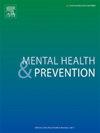The dual continua in youth mental health policy and practice: Screening and intervention for low mental wellbeing in youth to achieve targeted prevention
IF 2.4
Q2 Medicine
引用次数: 0
Abstract
Background
The mental health of young people in Australia and other nations has declined dramatically over the last decade and a half. While an increase in youth mental healthcare services is needed to meet rising demand, on its own, this is unlikely to reverse the concerning trend. A greater focus on prevention is needed.
Aims
This article aims to propose an innovative, theoretically-grounded approach to prevention that complements more common population-based (i.e., changing risk and protective factors) and targeted (i.e., supporting individuals with subthreshold symptoms of mental illness) approaches. Aligned with the dual-continua model of mental health (i.e., where mental well-being and ill-health are distinct dimensions of overall mental health), this third approach focuses on addressing low levels of mental wellbeing, which is both a significant predictor of future mental ill-health and a distressing and disabling state that requires intervention in its own right.
Recommendations
Large-scale screening for low mental wellbeing, using psychometrically sound tools, could be conducted online and through schools, higher education, and primary care services. Those with low mental wellbeing could be linked to community services offering evidence-based interventions. This approach is likely to carry less stigma and may be easier to achieve than targeting those with subthreshold symptoms through clinical services.
Conclusions
The dire state of youth mental health is an urgent call-to-action to adopt novel approaches to address this crisis. We need to make better use of the available evidence and tools at-hand to strengthen our focus on low mental wellbeing, not just mental ill-health.
青少年心理健康政策和实践的双重连续性:筛查和干预青少年低心理健康以实现有针对性的预防
在过去的15年里,澳大利亚和其他国家年轻人的心理健康状况急剧下降。虽然需要增加青少年精神保健服务以满足日益增长的需求,但这本身不太可能扭转令人担忧的趋势。需要更加注重预防。本文旨在提出一种创新的、基于理论的预防方法,以补充更常见的基于人群的方法(即改变风险和保护因素)和有针对性的方法(即支持具有阈下精神疾病症状的个体)。与精神健康的双连续模型(即,精神健康和不健康是整体精神健康的不同方面)相一致,第三种方法侧重于解决低水平的精神健康问题,这既是未来精神健康不佳的重要预测指标,也是一种痛苦和残疾状态,需要本身进行干预。建议使用心理测量学上可靠的工具,对低心理健康水平进行大规模筛查,可以在网上进行,也可以通过学校、高等教育和初级保健服务进行。那些心理健康状况不佳的人可以与提供循证干预措施的社区服务联系起来。与通过临床服务针对阈下症状的患者相比,这种方法可能不那么污名化,而且可能更容易实现。结论:青少年心理健康状况堪忧,迫切需要采取新的措施来解决这一危机。我们需要更好地利用现有的证据和手头的工具,加强我们对低精神健康的关注,而不仅仅是精神不健康。
本文章由计算机程序翻译,如有差异,请以英文原文为准。
求助全文
约1分钟内获得全文
求助全文
来源期刊

Mental Health and Prevention
Medicine-Psychiatry and Mental Health
CiteScore
2.10
自引率
0.00%
发文量
22
审稿时长
24 days
 求助内容:
求助内容: 应助结果提醒方式:
应助结果提醒方式:


